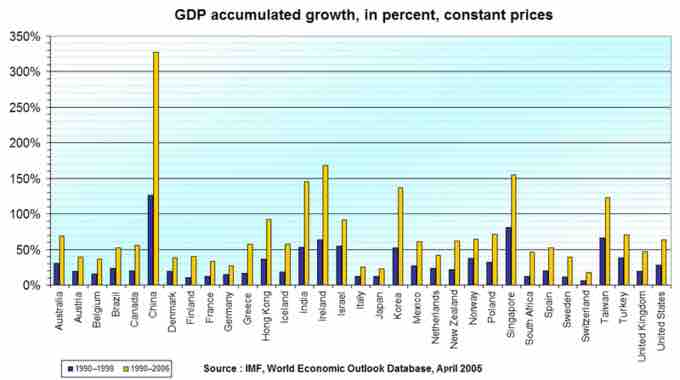Economic Growth
In macroeconomics, long-run growth is the increase in the market value of goods and services produced by an economy over a period of time. The long-run growth is determined by percentage of change in the real gross domestic product (GDP) . In order for an economy to experience positive long-run growth its outputs and inputs must be in balance for an increase to occur in supply, demand, revenue, and employment. The long-run economic growth is determined by short-run economic decisions.

Gross Domestic Product
The change in GDP is used to determine economic growth within a country.
Government Activity
Government activity and policies have a direct impact on long-run growth. Long-run growth can be redirected and improved when changes are made to short-run actions. When an economy or industry experiences imbalanced in economic growth, the government can respond in order to assist in securing the market. Examples of possible government activity include:
- Investment: the government can stimulate economic growth by investing in the economy. Examples of stimulants include investing in market production, infrastructure, education, and preventative health care. This is especially important when excessive growth occurs. The government must stimulate economic growth to meet the needs of an increasing population.
- Monetary policy: the government enacts monetary policies to keep the growth rate of money steady. This helps to control excess inflation and excess short-term growth, both of which can negatively affect long-run growth. It's important to note, however, that fiscal policy can also affect the level of inflation within an economy.
- Fiscal Policy: Choices in tax structure, government spending, and economic regulation can all impact long-run growth by affecting the choices that businesses and individuals make.
Government activity impacts long-run growth. It is critical that increasing populations have access to productive resources. It is also important that markets stay balanced in order to be successful and thrive.